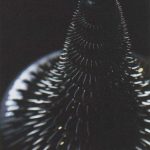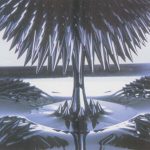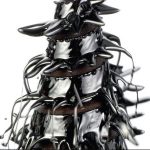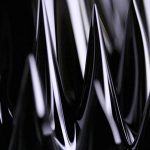Sachiko Kodama, Minako Takeno: Protrude, flow
Artist(s):
Title:
- Protrude, flow
Exhibition:
Creation Year:
- 2000
Medium:
- Interactive Installation
Size:
- 4m x 4m x 7m
Category:
Artist Statement:
Modeling physical material more freely and making it move more flexibly is a dream long sought after by human beings, and many artists have created surreal illusions in pictures or moving images. But those were imaginary. Can we obtain a real object that transforms as we designed it? “Protrude, flow” is an interactive installation which expresses the dynamics of fluid motion of physical material, the dynamics of organic, wild shapes and movements of liquid, by means of digital computer control.
“Protrude, flow” uses magnetic fluid, sound, and moving images. Affected by the sounds and spectators’ voices in the exhibition place, the 3D patterns of magnetic fluid transform in various ways, and simultaneously its flowing movement and dynamic transformations are projected on the wide screen.
The magnetic fluid appears as a black fluid. It is made by dissolving ferro magnetic micro-powder in a solvent such as water or oil, and it remains strongly magnetic even in the fluid condition. Therefore, it is more flexibly transformable than iron or sand, and so it is possible to create more complicated 3D organic patterns. These appear occasionally as pointed mountains or pliable organic shapes, sometimes as flowing particle streams.
The transformation of magnetic fluid is caused by the interaction with environmental sound. The sounds in the exhibition space (sounds created by artists and the voices of spectators) are caught by a microphone hanging from the ceiling; a computer converts these to electromagnetic voltage which determines the strength of the magnetic field. At the same time, the magnetic fluid changes its 3D patterns sequentially. Each pattern appears synchronized to the environmental sound and the points of the shapes move correspondingly. As a result, magnetic fluid pulsates according to the sound. A digital video camera captures images of the moving magnetic fluid, and projects it on the screen.
All Works by the Artist(s) in This Archive:
- Sachiko Kodama
-

Morpho Tower/Spiral Swirl
[SIGGRAPH 2006] -

Protrude, flow
[SIGGRAPH 2001] -

Breathing Chaos
[SIGGRAPH Asia 2008] -

Fluidity
[SIGGRAPH Asia 2008] - Minako Takeno





